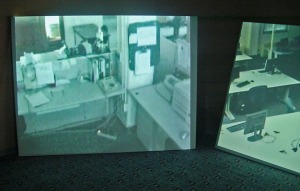(From a Fosters.com article)Â  It’s colorless, odorless, tasteless and can kill you without notice.
It’s colorless, odorless, tasteless and can kill you without notice.
The potentially lethal amount of carbon monoxide or CO found to be leaking inside the Hilton Garden Inn on Monday is actually considered to be a by-product of combustion of fossil fuels.
According to the Centers for Disease Control and Prevention (CDC) statistics show that each year more than 500 Americans die from unintentional carbon monoxide poisoning. On Monday, a total of 12 people were sickened and taken to the hospital as a result of nearly 600 parts per million of CO being found in the basement of the downtown hotel.
A normal level of the colorless, odorless gas is said to be between 30 to 35 ppm.
“Appliances such as furnaces, space heaters, clothes dryers, ranges, ovens, water heaters, charcoal grills, fireplaces and wood burning stoves can produce CO,” according to the CDC. “It is usually vented to the outside if appliances function correctly and the home is vented properly. Problems occur when furnace heat exchanger crack or vents and chimneys become blocked. Insulation sometimes can trap CO in the home.”
Once the gas is inhaled, it is easily absorbed through the lungs.
The CDC says when CO is breathed in by an individual, it accumulates in the blood and forms a toxic compound known as carboxyhemoglobin or COHb. Hemoglobin carries oxygen in the bloodstream to cells and tissues. When carbon monoxide is introduced to humans it attaches itself to hemoglobin and displaces the oxygen the body’s organs need.
When that happens symptoms can occur that include headaches, fatigue, nausea, dizzy spells, confusion and irritability. Later stages of CO poisoning can cause vomiting, loss of consciousness and eventually brain damage or death.
http://www.fosters.com/apps/pbcs.dll/article?AID=/20100217/GJNEWS_01/702179868/-1/FOSNEWS




